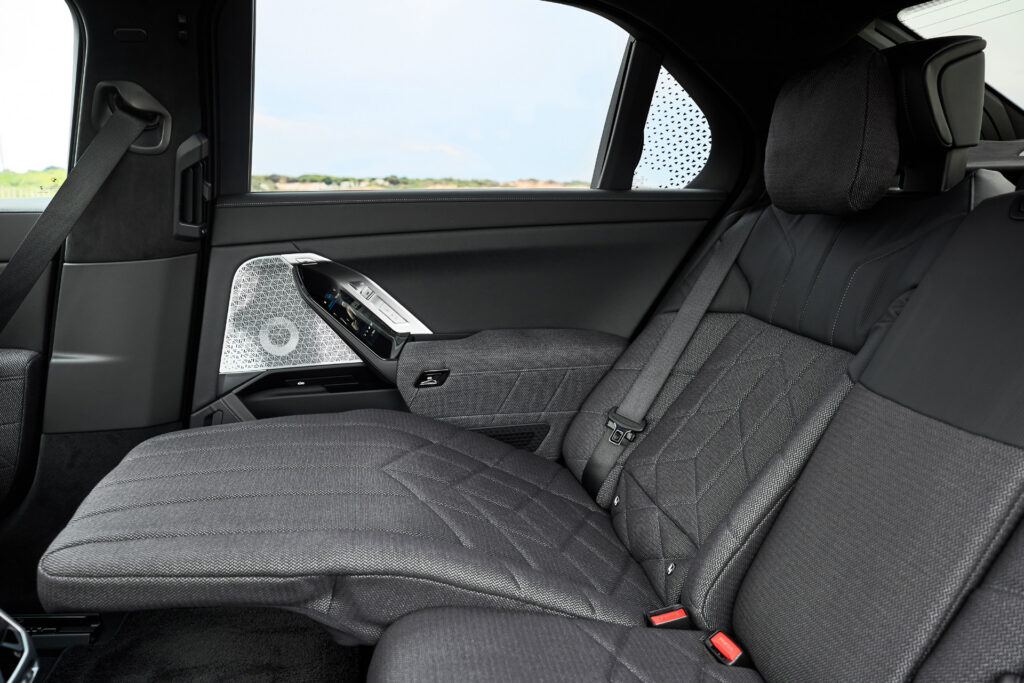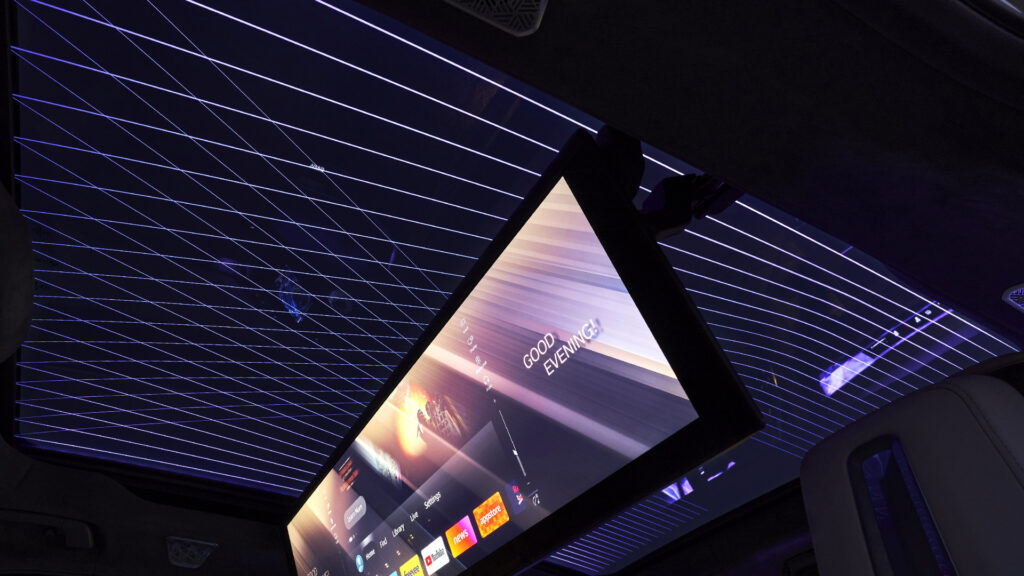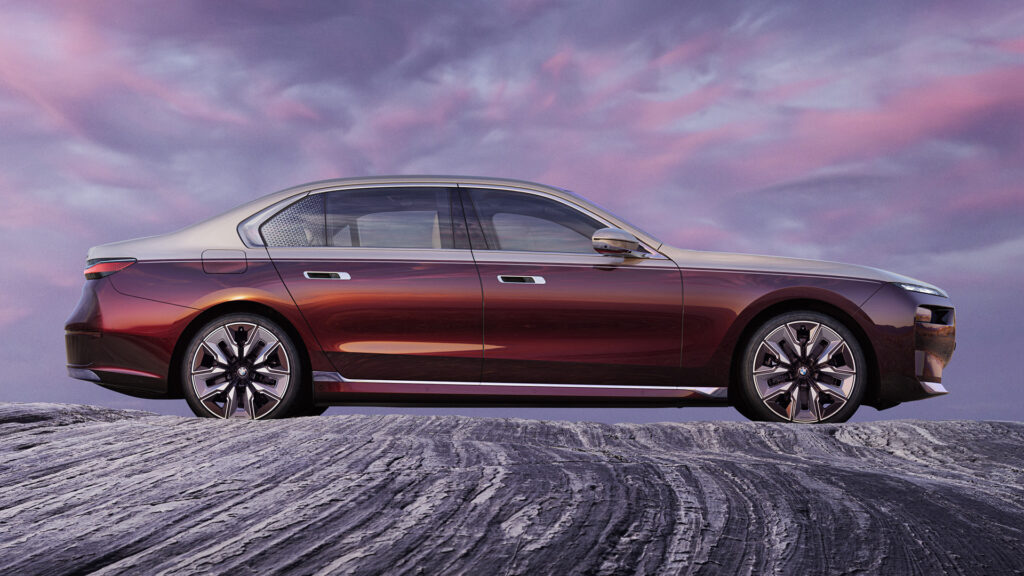i7 – The Absolute Boss
Article by James Herne
The BMW i7 is a long-bodied luxury sedan. I’m thinking — it should be judged from the perspective of someone sitting in the back seat…
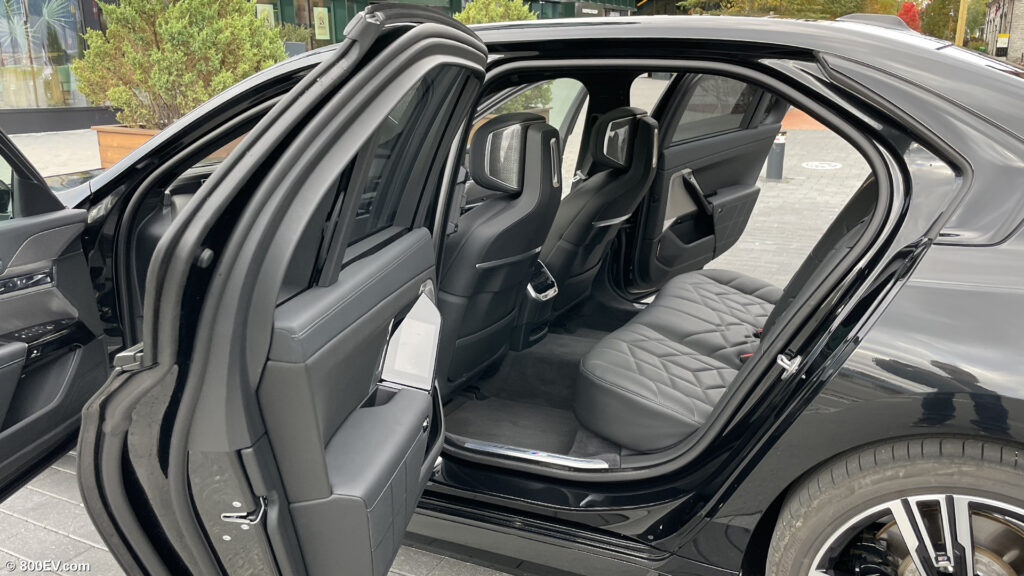
But it’s not tall like an SUV, and it’s a BMW, which means the i7 can also be appreciated for how enjoyable it is to drive.
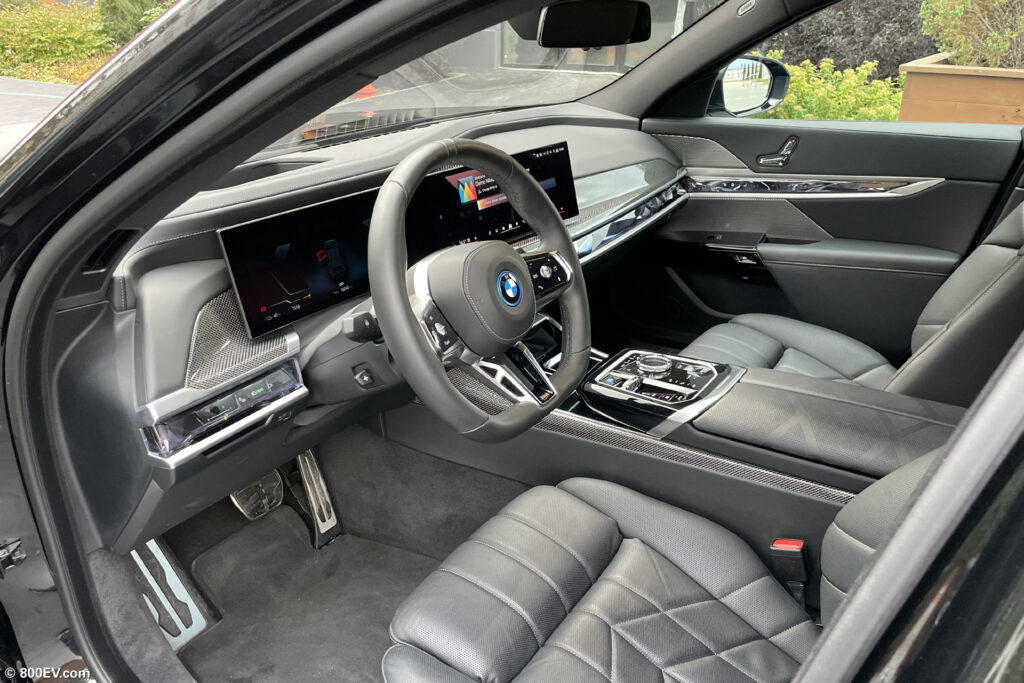
The buyer of a new luxury car isn’t interested in what’s under the hood — what matters is that the engineers have created a top-tier product that works flawlessly. The i7 represents the 7th generation of the BMW 7 Series — a lineage that began back in ’77. Let’s look at the key innovations from the perspective of a new luxury car buyer:
BMW 7 Series generations and innovations
1. E23 – electrically reclining rear seats, car phone
2. E32 – lumbar support adjustment, double-layer sound-insulating side windows
3. E38 – satellite navigation, front seats with massage function, distance-keeping cruise control
4. E65 – hydraulic system that reduces body roll in cornering, soft-close doors
5. F01 – hybrid version (battery ~1 kWh), rear-wheel steering, side cameras, rear seats with massage function
6. G11 – plug-in hybrid (battery ~10 kWh)
7. G70 – fully electric (battery ~100 kWh)
Before the era of electric motors, the most luxurious engines were 12-cylinder ones, because the more cylinders an engine has, the less vibration it produces. Among German luxury car manufacturers, BMW was the first to offer 12-cylinder engines. BMW even built an E32 prototype with a V16 engine.
In 1998, BMW began supplying V12 engines to Rolls-Royce and V8 engines to Bentley for their shared factory in Crewe. It so happened that Volkswagen bought the historic Bentley factory in Crewe, while BMW purchased the rights to use the Rolls-Royce brand name in the automotive industry (aircraft engines with the same logo are made by a completely different company). BMW built a new modern factory in Goodwood and applied all the knowledge accumulated during the development of the 7 Series models to create the ultimate Rolls-Royce. Today, that means an electric Rolls-Royce — because only an electric powertrain offers a smoother ride than a 12-cylinder engine.
The BMW i7 is like a four-door version of the electric Rolls-Royce Spectre coupe, but actually, the Spectre is a two-door version of the BMW i7. You may have seen a video showing how the Rolls-Royce Spectre’s electric door can be closed by pressing the brake pedal — yes, that trick comes from the BMW i7. These cars share the same wheelbase and the same 101 kWh battery. The Spectre’s top version, the Black Badge, is exactly as powerful as the BMW’s top version, the i7 M70.
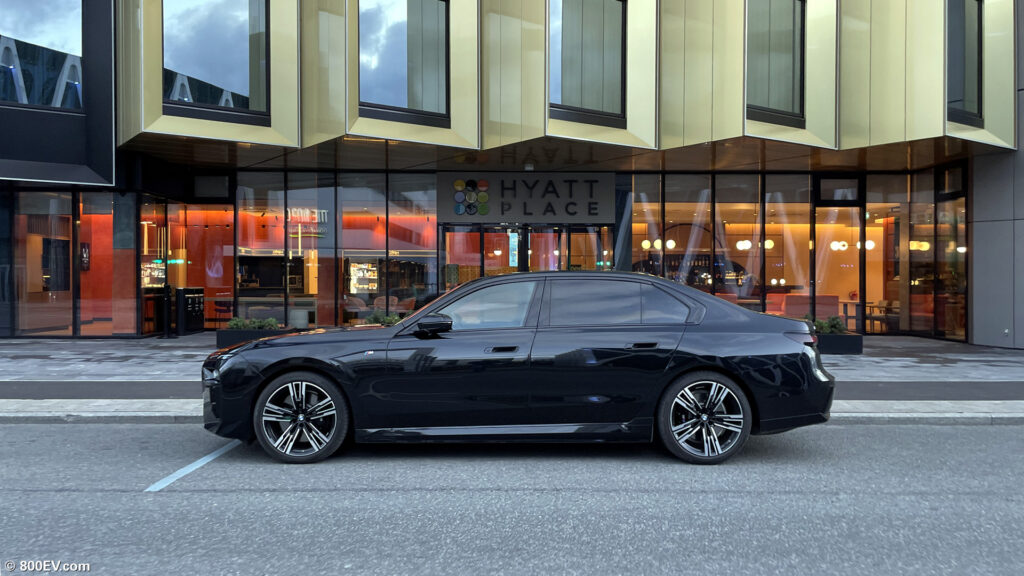
Even for a car buyer who doesn’t care about the climate change, an electric car is undoubtedly better because it drives super smoothly (there’s no gearbox), it is more powerful, and it is quiet (the cabin is separated from the road by the battery pack).
With the BMW i7, I can say, just like in the Depeche Mode song “Enjoy the Silence”:
All I ever wanted
All I ever needed
Is here in my arms…
i7’s steering wheel in my hands, I drive and feel inner peace…
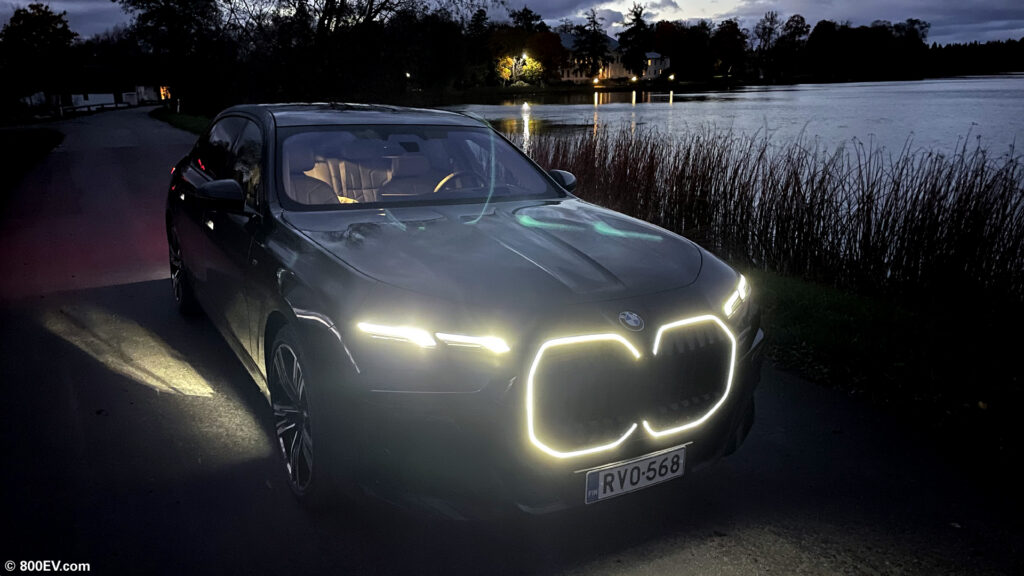
What’s more, this is a car that’s pleasant even in traffic jams. The car is so comfortable you don’t even want to reach your destination. Thanks to slow traffic, you can stay inside it for longer.
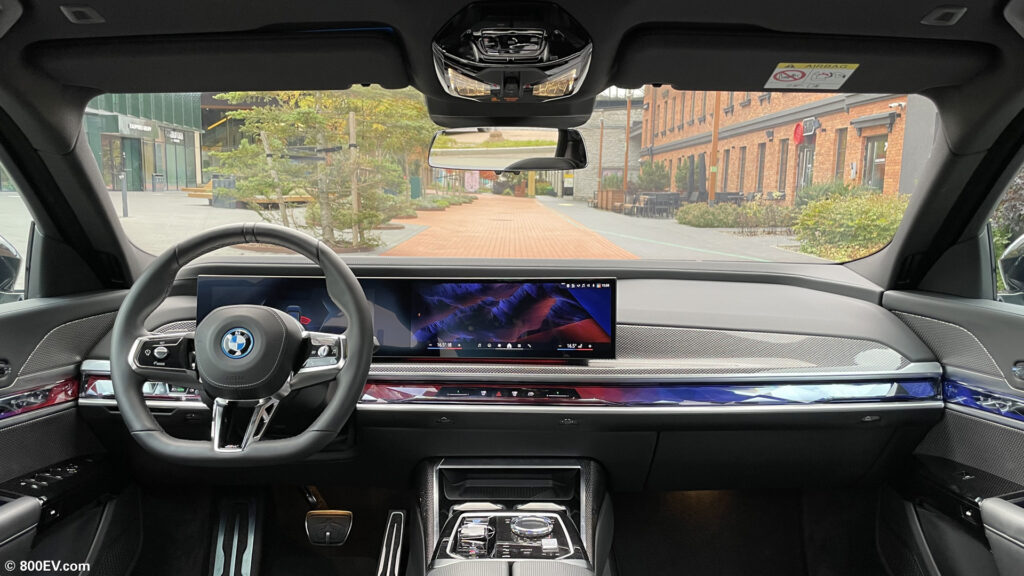
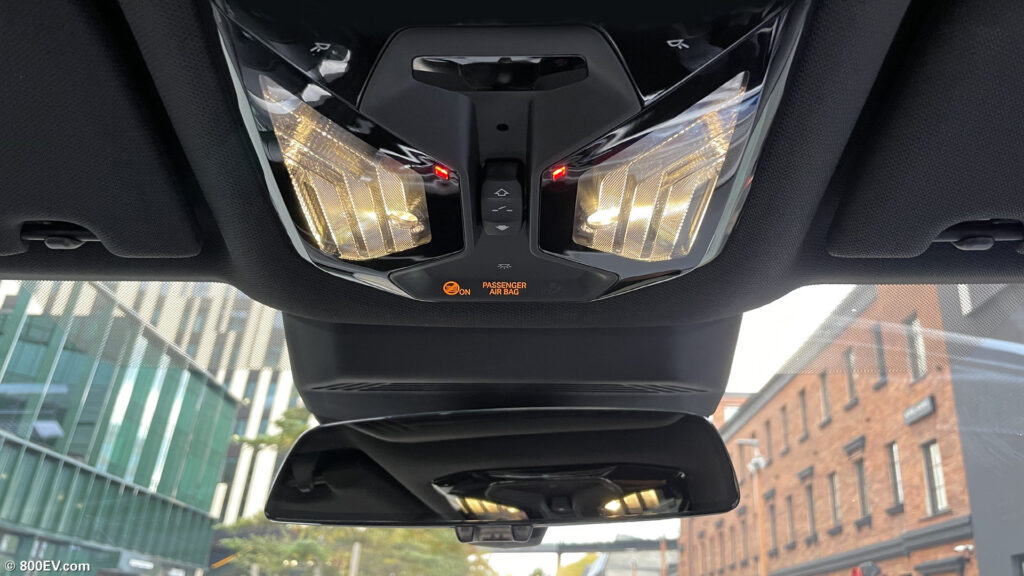
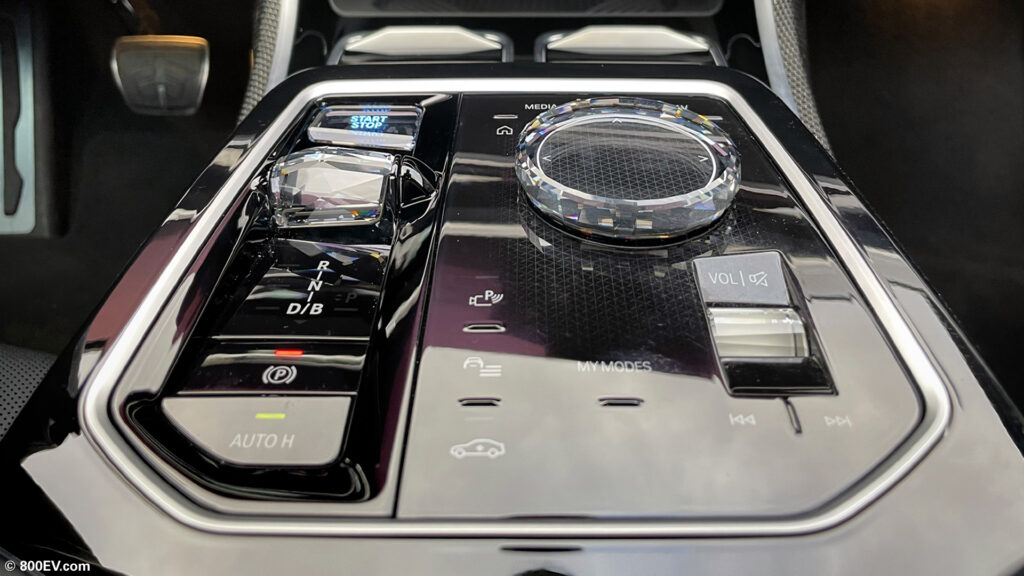
An electric car is so quiet that you can even observe wild animals from inside the car without scaring them off! Two hares had wandered into the city and I watched them closely for a whole minute, even moved the car slightly, but they weren’t frightened. The electric car truly suits a nature lover — in every sense.
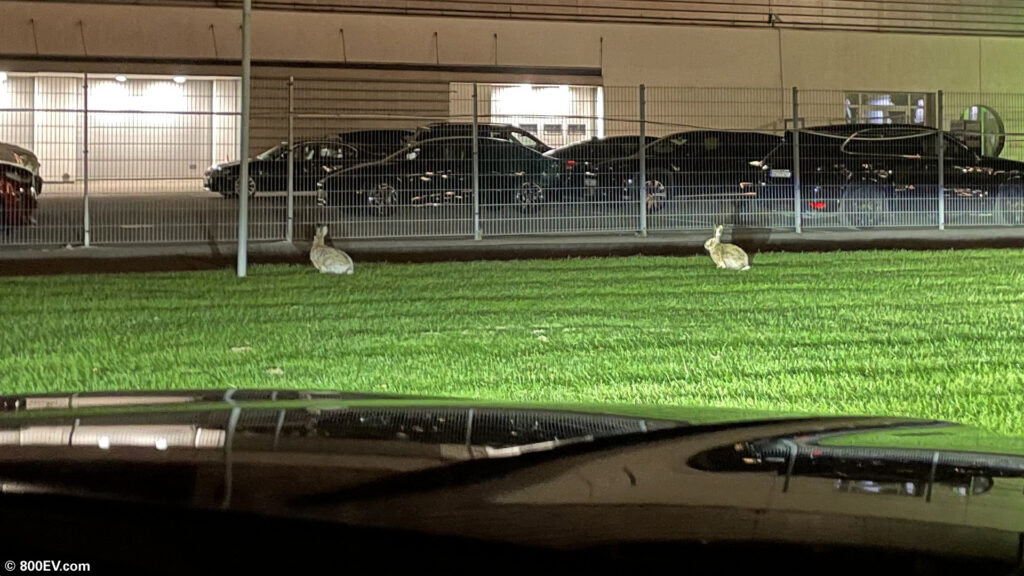
After spending time in the i7, driving a “normal” car is eye-opening. For the first time I noticed that smooth asphalt isn’t actually smooth — it has a surface texture! In the i7, you can’t feel it. The i7 spoiled me. Even my daughter, riding in the back, declared it the most comfortable car she’s ever been in.
Despite its size, the i7 handles like it’s defying physics. Thanks to the battery integrated into the floor, the center of gravity is low, and thanks to the standard rear-wheel steering system, the car’s weight isn’t noticeable in fast corners. Really, it’s not. The car grips the road as if by magic. The rear-wheel steering system is, in my opinion, one of the most wonderful innovations in automotive development. The larger the car, the more it benefits from rear-wheel steering. BMW first implemented four-wheel steering in 1992 in the 8 Series. Four-wheel steering improves two things: at high speeds, it helps maintain stability in corners (rear wheels turn into the curve), and at low speeds, it reduces the turning radius (rear wheels turn opposite the front).
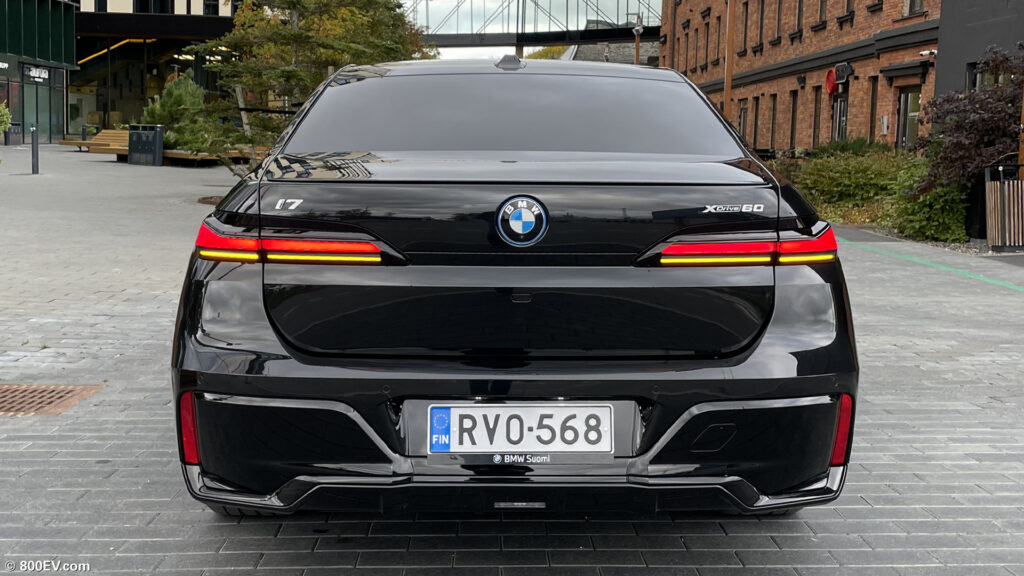
I tested the 400 kW version of the i7. Actually, you only get that much of power when you pull the Boost-paddle behind the steering wheel. It increases the output from 360 kW to 400 kW for ten seconds.
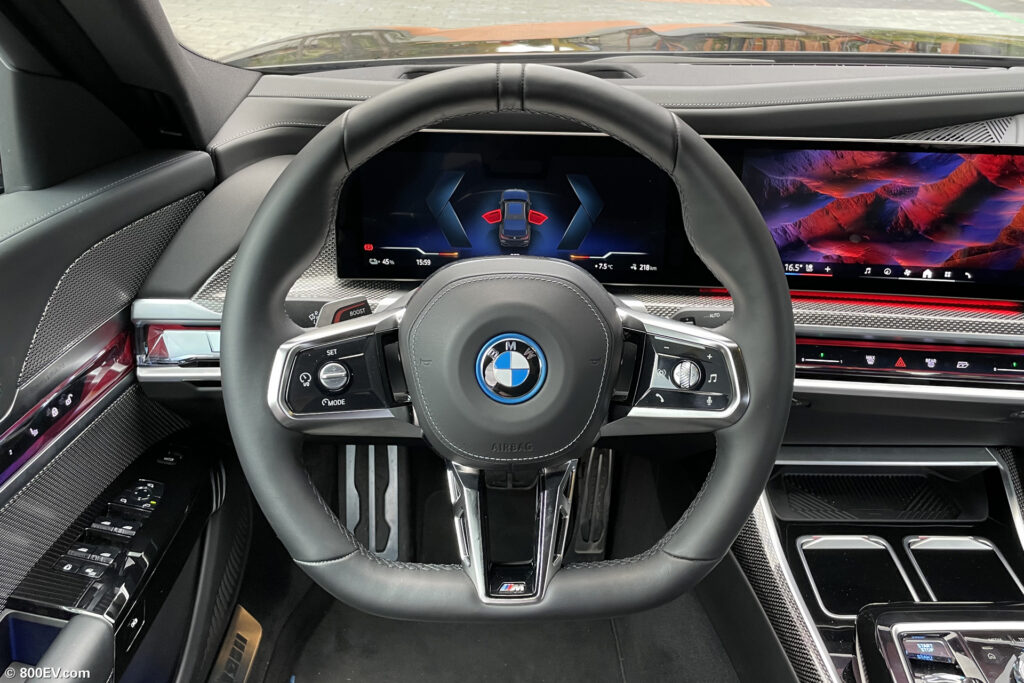
Another way to get maximum power is to drive in Sport mode, which is what I did. Speaking of the top M70 version, it delivers just 425 kW in normal setting and the full 485 kW is unleashed with the Boost button or in Sport mode.
BMW is a luxury car specialist, but I managed to find three drawbacks. First, the software. The settings you want to change on the screen while driving should be immediately visible, without scrolling. The voice-controlled “AI” assistant was made before the ChatGPT era. Luckily, over-the-air updates can fix this. The touchscreens on the rear doors (standard equipment) make a very special impression, but they’re positioned according to the door’s design, not the ergonomics. To look at the screen, you need to tilt your head and my neck got stiff.
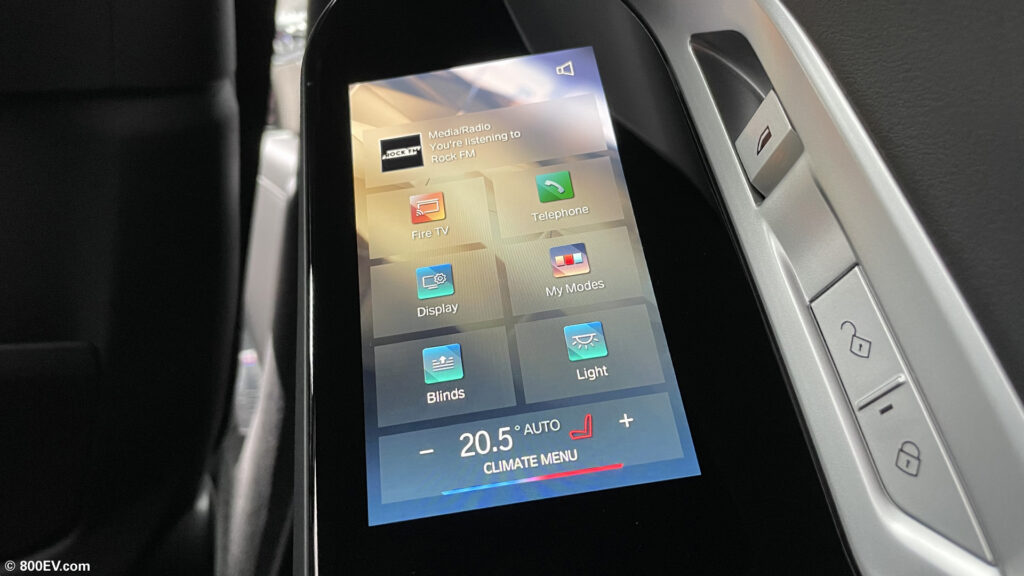
The problem was probably that I tried to explore everything the screen could do. A normal user wouldn’t stare at it for minutes; they’d go straight to what they need.
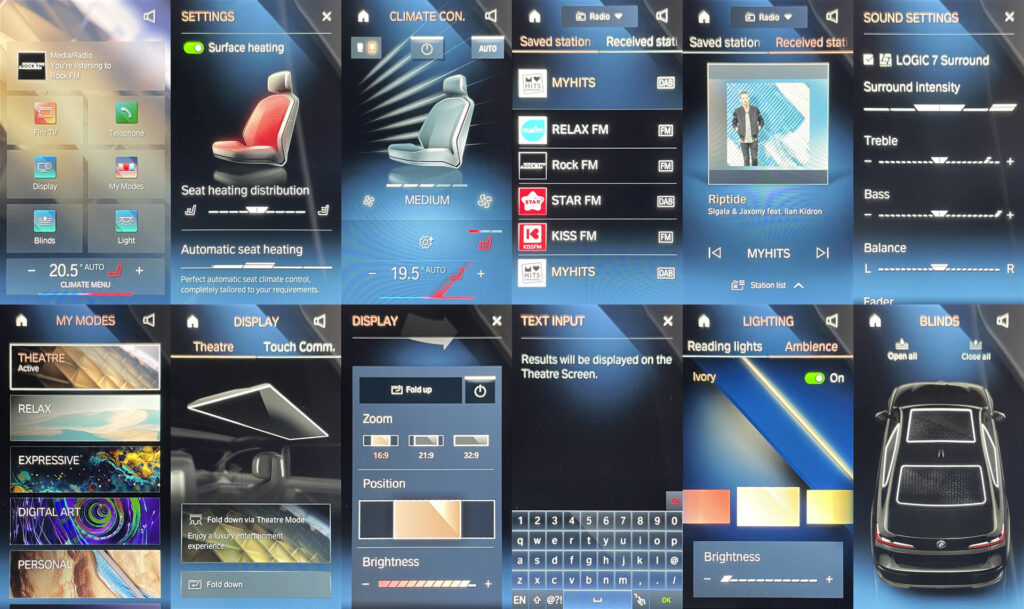
But beauty requires sacrifice. The “crystal” strip on the dashboard reflects sunlight during the day and at night the strip’s internal light reflects back from the windows. Still, I wouldn’t give up the crystal, because it creates a special feeling in the car.
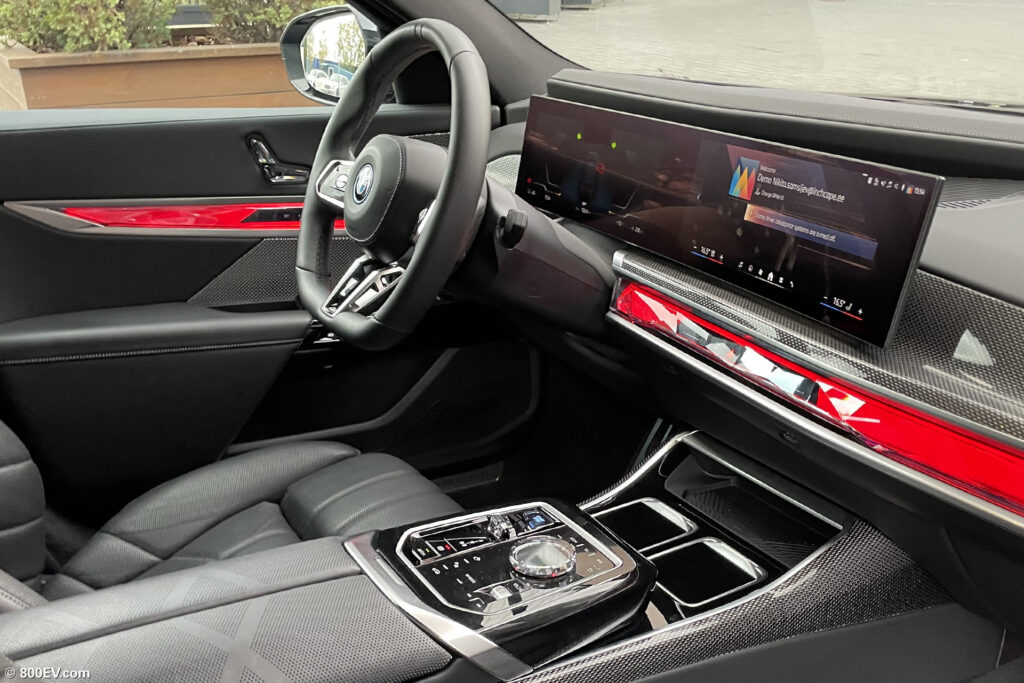
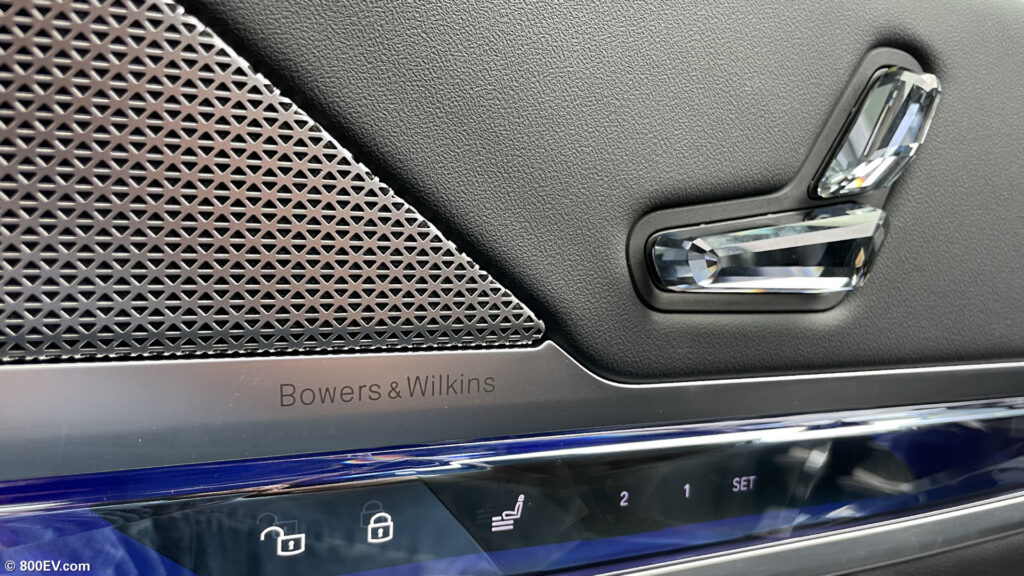
Rear passengers can have an extraordinary experience with the optional ultra-wide cinema screen mounted in the ceiling. It folds down at the press of a button. Its resolution is equivalent to two 4K screens side by side: 7680 x 2160 pixels. As the screen lowers, the roof sun shade, rear curtain, and side curtains all close automatically, while an epic, cinematic sound plays.
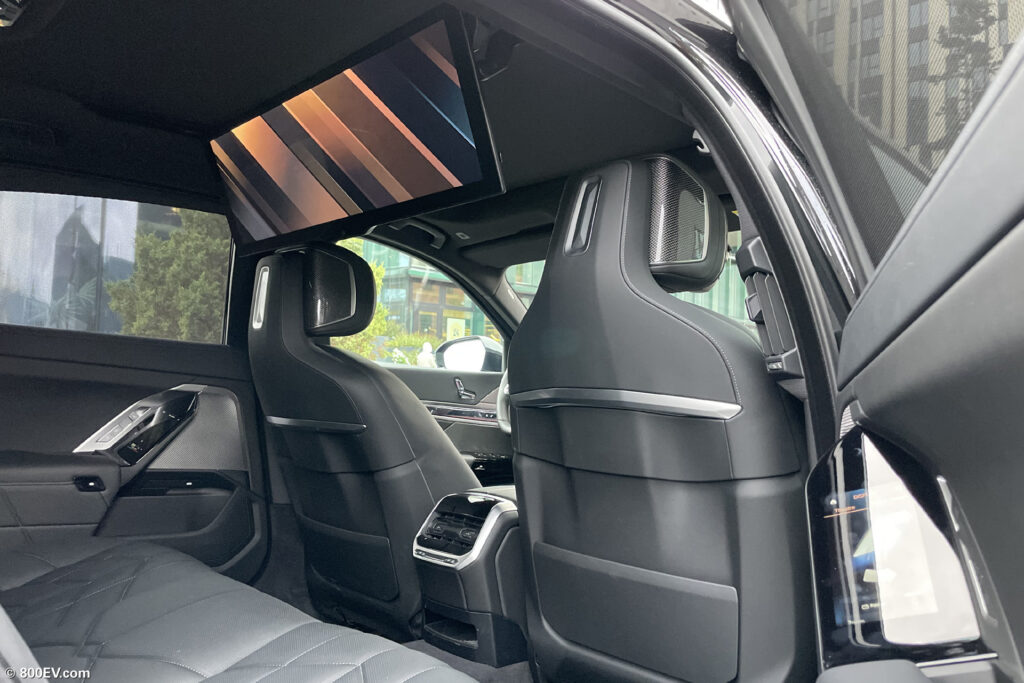
The base setup includes an 18-speaker, 655 W Bowers & Wilkins sound system, which is already excellent, but optionally, you can get an almost 2-kilowatt (!) 35-speaker Bowers & Wilkins sound system — and it’s phenomenal.
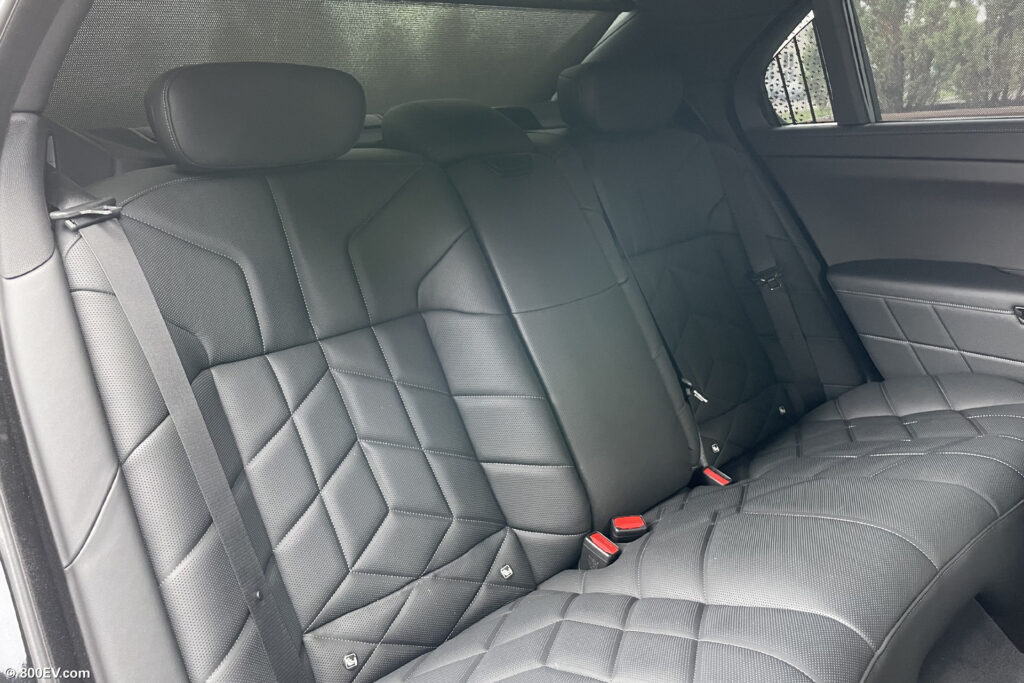
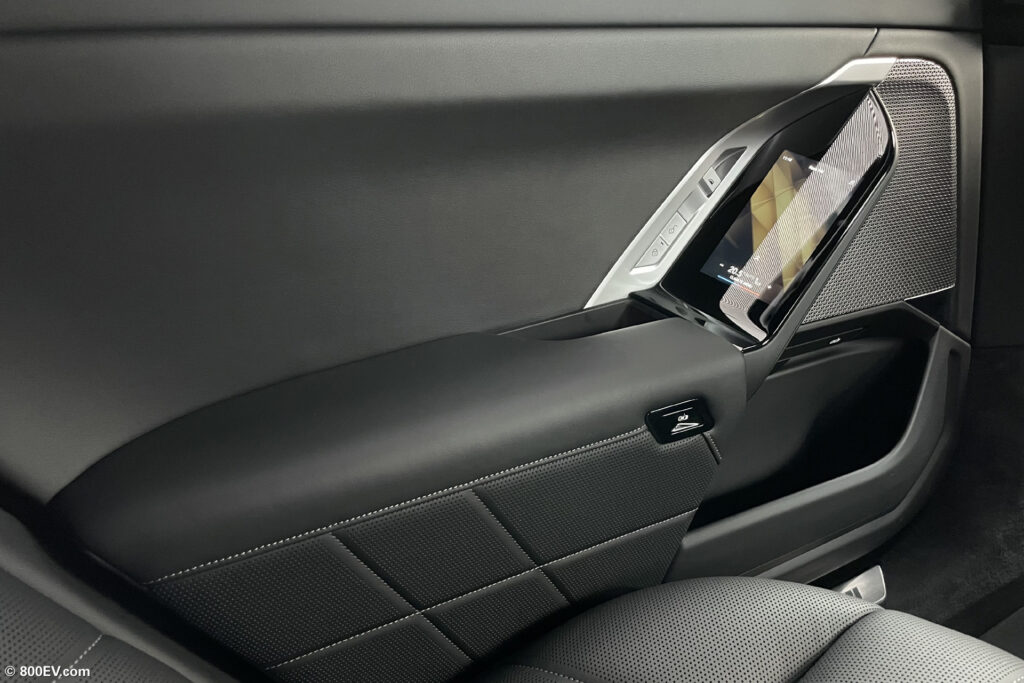
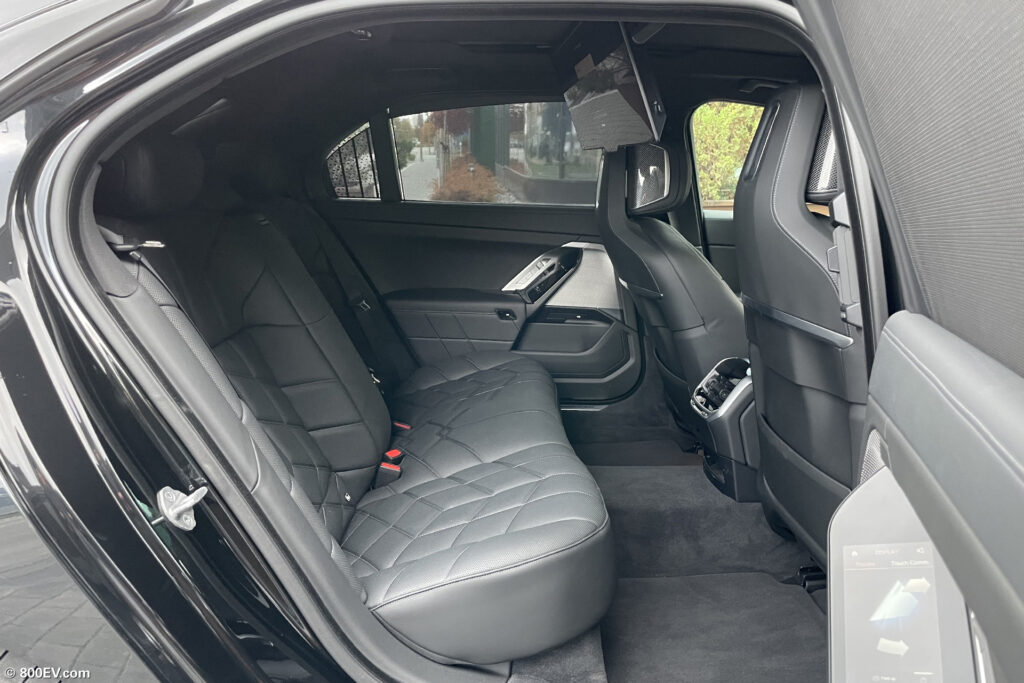
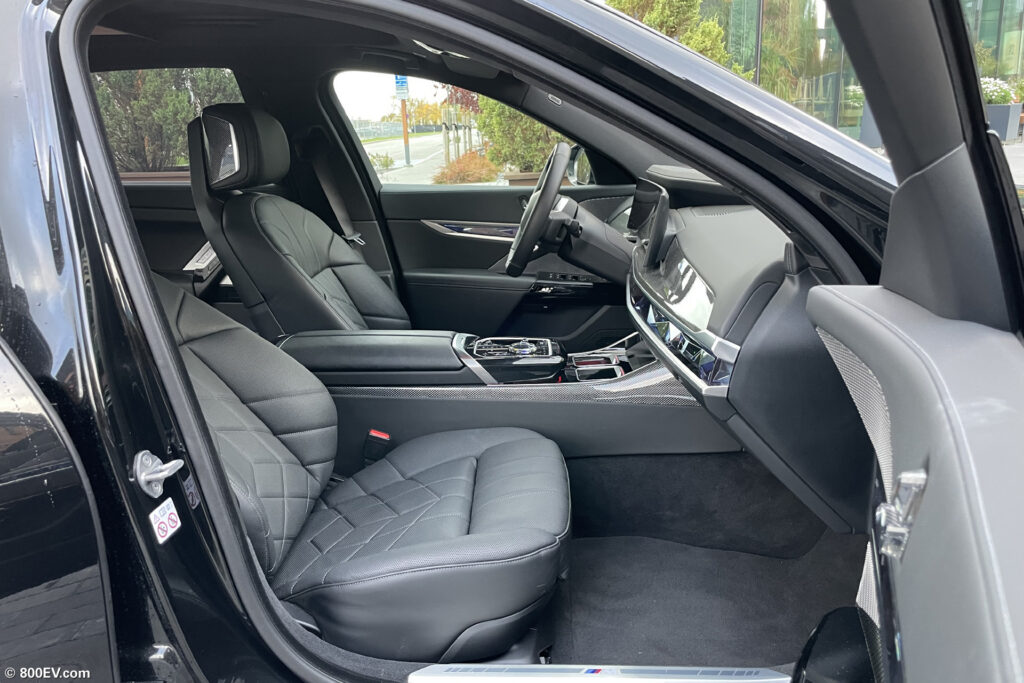

Speaking of exclusivity, the BMW i7 can be ordered with a two-tone exterior finish and nothing says “exclusive” better than a perfectly chosen two-color combo. Considering it is difficult to find a tasteful color combination, the upper part of the car is limited to black or metallic gray. The lower body color can be chosen from the standard palette, and if none of those shades are special enough, it is possible to order a custom color. As for cost, the two-tone finish requires a sacrifice roughly equal to the price of the futuristic electric BMW CE 04 two-wheeler. And if you want the lower half painted in a rare color, you’ll have to sacrifice an additional amount equal to the price of the youthful electric BMW CE 02 two-wheeler.
In my view, the i7 as a true luxury car should be equipped with massage seats both front and rear, the 35-speaker audio system, power-operated doors, and a rear seat that transforms into a recliner. The theater screen, the light beams to the panoramic roof, and a two-tone exterior would add a finishing touch.
As a true luxury vehicle, the 7th-generation 7 Series is built only as a long-wheelbase model. Below is a comparison to the extra long BMW L7 from the past (body extension between the doors plus long rear doors) and as you can see, the i7 is even longer:
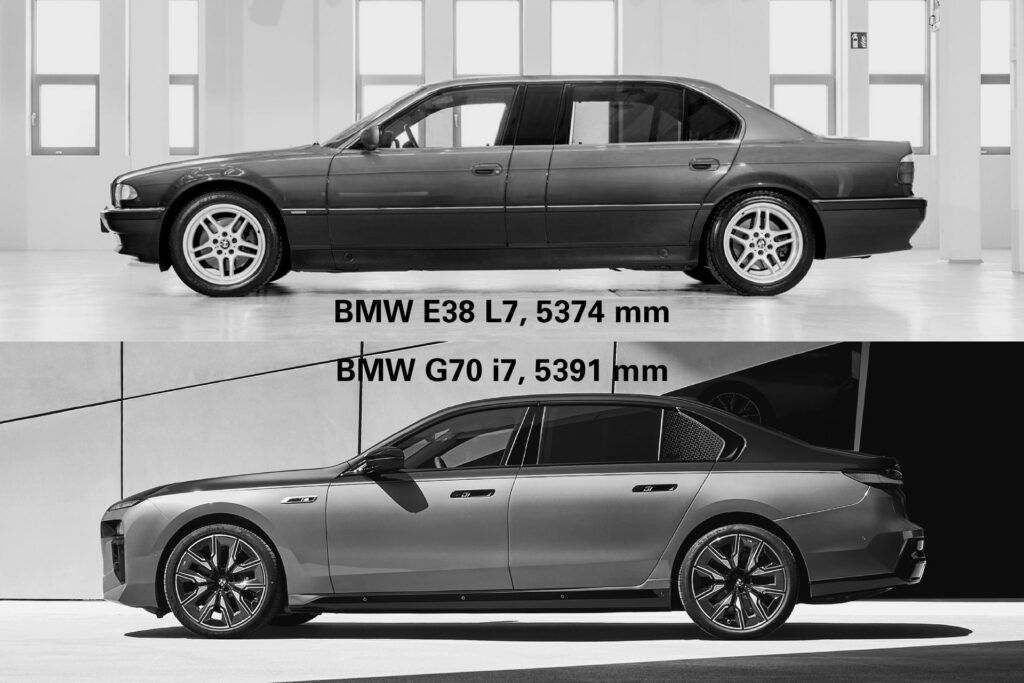
The wheelbase is the same as that of the sixth-generation long-wheelbase model, and in addition, the i7 is 4.8″ / 123 mm longer than that. The ship’s total length is 212″ / 5,391 mm. If needed, it can tow up to 2,000 kg / 4400 lb with a tow hook. On a special order they even make this battleship bulletproof.
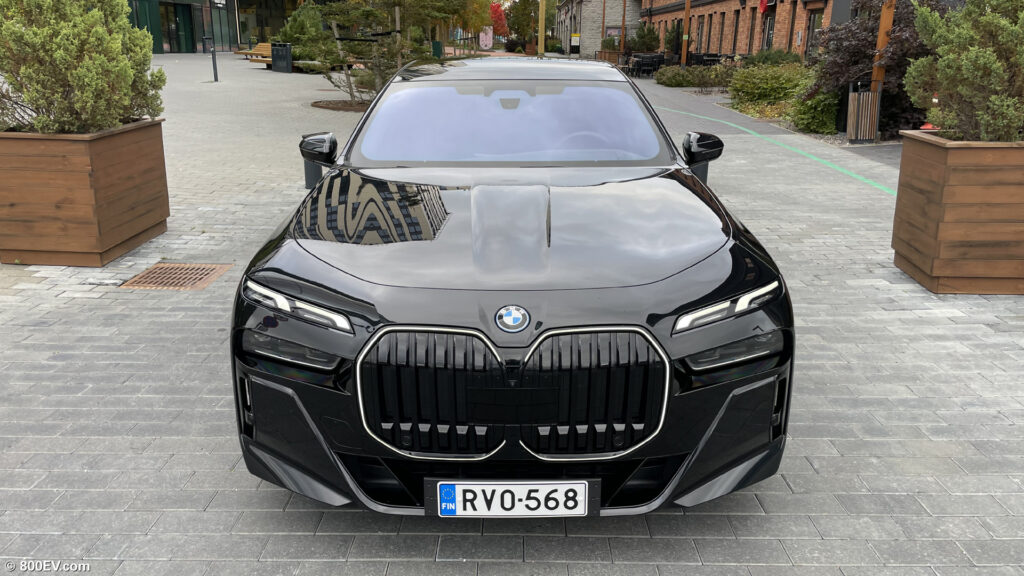
The car’s upright front end means the hood is visible from the driver’s seat, which enhances the boss feeling — you’re not just looking out the window; you can see the ship you’re captaining. Of course, the i7’s tall front isn’t aerodynamic, but its design has a message — it says the owner of this car depends on no one. The BMW i7 is the car of an absolute boss.
| BMW i7 | eDrive 50 | xDrive 60 | xDrive M70 |
| Drive type | RWD | 4WD | 4WD |
| Power | 335 kW | 400 kW | 485 kW |
| 0-60 mph | 5.3 s | 4.5 s | 3.5 s |
| 0–100 km/h | 5.5 s | 4.7 s | 3.7 s |
BMW press photos showing the equipment that the test car didn’t have:
